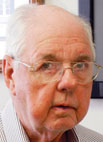
"Gelbvieh calves are small, but grow very quickly. Gelbvieh cows are excellent mothers and are good milkers, too,” Brenda Shealy said. Brenda knows her breed, thanks to a second chance at a life on the farm.
Brenda and her husband, Lance, served in the Navy since the early ‘80s. They met in school while training to be anesthetists. Both served in Desert Storm. After Brenda had been gone from Arkansas for 20 years, they decided to move back, purchasing property in Oak Grove, Ark. “Moving back home was my dream and Lance decided to let me have it,” she said. Lance was raised in Jackson, Miss., and didn’t know anything about country life. “Lance likes the cattle and has learned to like the horses now that he is used to them,” Brenda said. “He likes going to the shows.”
Born and raised in Green Forest, Ark., most of Brenda's family lives nearby. “About a year after we moved home, my brother lost his oldest child and only son, Army 2nd Lieutenant J. Michael Goins, in Iraq at the battle of KIA in Najaf,” Brenda said. “It was important for me to be here for my family.”
Lance and Brenda have two 80-acre pastures. Brenda’s parents farm just down the road from their place, and that's where they keep their cattle. Brenda keeps the horses at her and Lance's farm.
Lance still works full time as an anesthetist at the Northwest Arkansas Medical Center in Harrison, Ark. Brenda contracts for hospitals in Arkansas and Missouri when she isn’t taking care of her horses and cattle.
“My brother-in-law was investigating different breeds of cattle,” she said. “He was taken with this European breed, Gelbvieh.” Lance and Brenda decided to start raising them. “The Gelbvieh breed of cattle was developed originally in Europe as a milking breed,” Brenda said.
“We have heavy weaning stock when we are ready to sell with very little outside help, no creep feeding because the cows are such heavy milkers.” “They have a very gentle, even disposition, too,” she added. “I handle the bulls myself.” The Gelbvieh cattle breed originated in Bavaria and was introduced into the United States in the 1970s.
“Right now we have 63 cow-calf pairs,” Brenda said. “We usually retain two or three bulls a year and sell the others,” she said. “I think people are going to find Gelbvieh cattle make a very good cross with commercial cattle,” she said. “The Gelbvieh influence makes for a really good replacement heifer.” Herefords were the first breed used for crosses with Gelbvieh cattle. “You get the same Angus marbling and benefits of a small, fast-growing calf when you cross Angus cattle with Gelbvieh,” Brenda said.
And as for her love of horses, Brenda was able to relive that life as well, when she and Lance moved back home.
“I hadn’t ridden in 20 years. I grew up riding horses and running barrels,” she said. “I took my horse to college with me and ran barrels on a college rodeo team for Arkansas State University.” Brenda sold her horses after college when joining the Navy. “The first horse I bought when we came back was a fox trotter gelding anyone could ride,” Brenda said. “I just wanted to trail ride again.”
Next, Brenda and Lance bought a paint mare Lance found on the internet. When Brenda went to register their new horse, she found out the mare was bred from a world champion halter horse. “I started showing her on the side,” Brenda said. She eventually decided to sell that horse and got involved in halter shows with a trainer who helped with her new two-year-old mare. He still works with her today.
She bred their 10 brood mares through artificial insemination successfully last year with the help of Saint Francis Vet Clinic. The vet asked her if she was going to try again this year. “Yep, we are going to do it,” she said. “He is going to help me collect my stallions, breed my mares and ship to other breeders,” she said. “We have breeders who have bred with one of the stallions I bought who want to use him again.” Her stallion was paint congress champion as a two-year-old. Brenda plans to start showing him again as an aged stallion next fall after breeding season.
It's obvious to all who meet Brenda, she's happy to be back in the Ozarks, living out her dream of working with her cattle and horses and keeping her family close.







